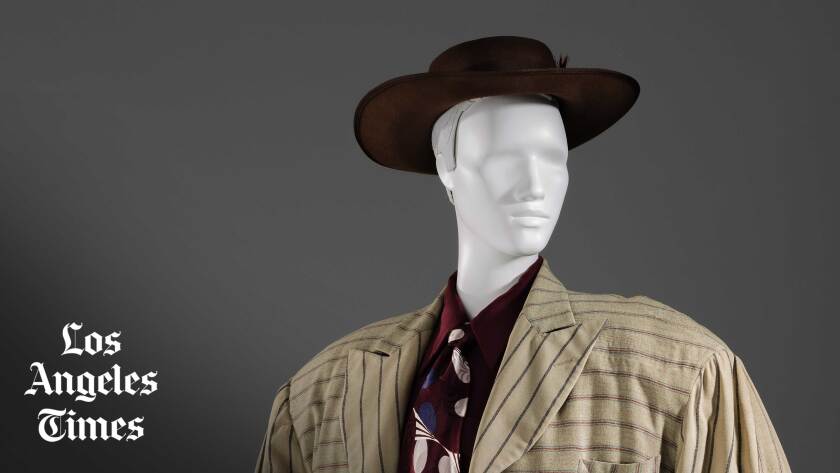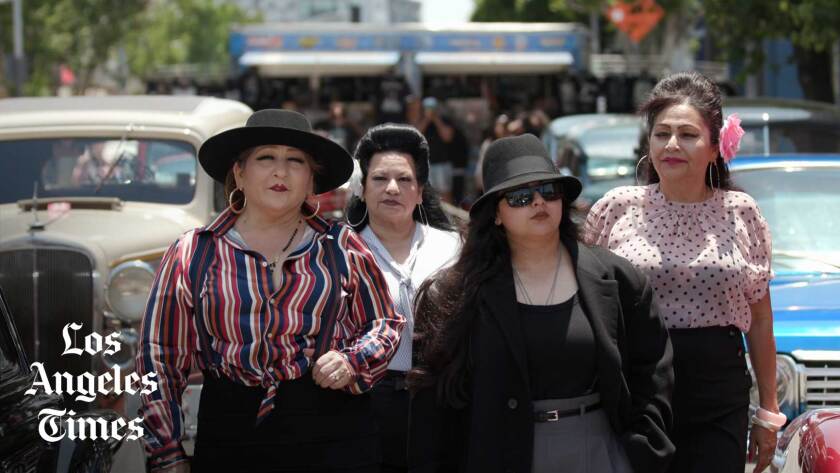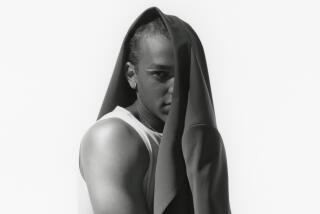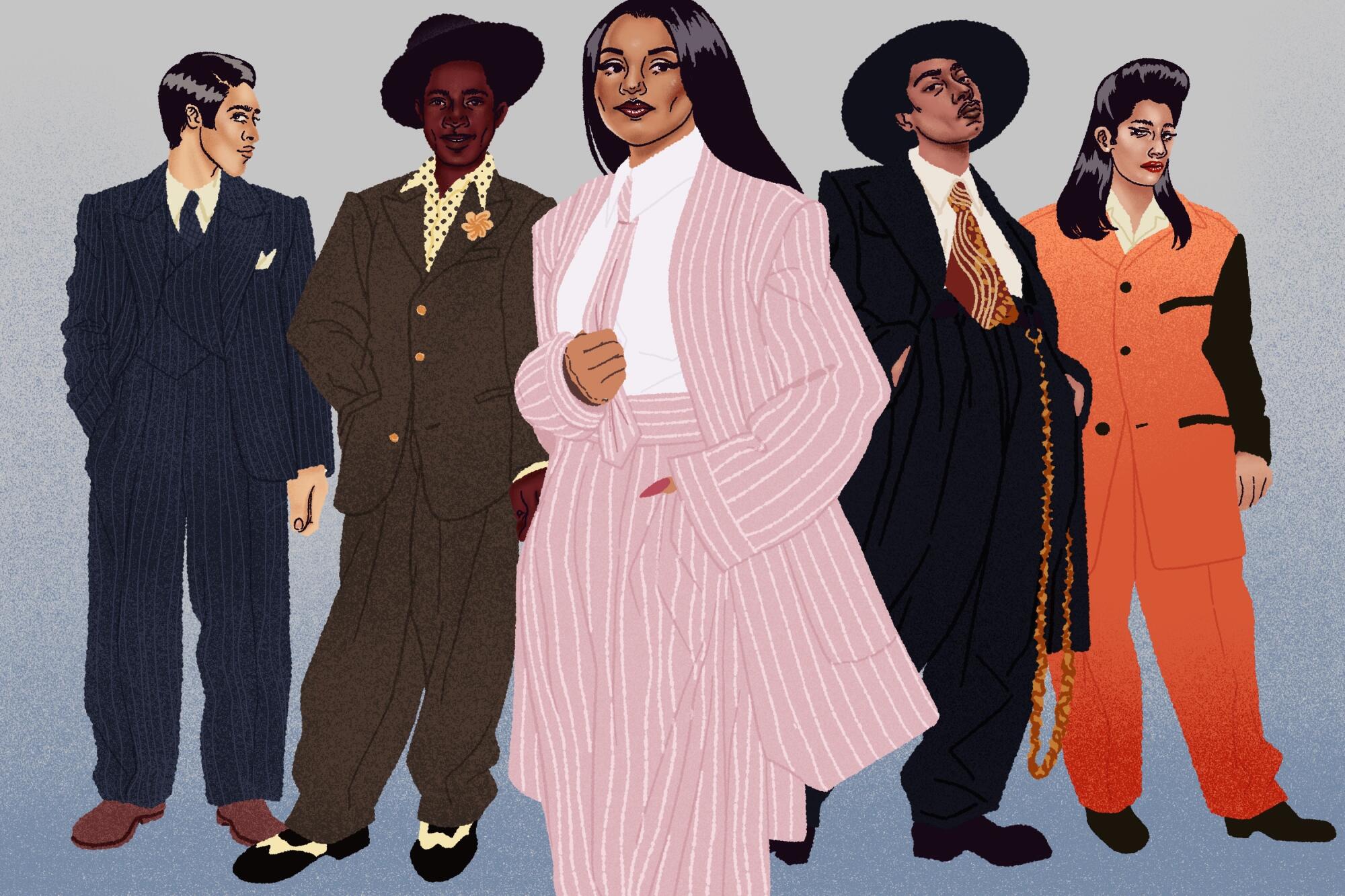
A suit lands in the United States on the back of an exiled king. It is copied, amended and upgraded, embraced by Hollywood actors in search of the fashionable. As it travels the country in the late 1930s, the coats grow longer, the pants more voluminous and the waists ever more cinched. It is adopted by bandleaders and jazz musicians who add bold ties in colorful prints.
The zoot suit, colloquially known in its era as “drapes,” was, by most accounts, made prominent by African Americans in Harlem and then quickly embraced by working-class youths across the country and across racial lines — in California, by Mexican Americans, Filipinos and a small subset of Japanese Americans who took their suits with them to World War II-era incarceration camps. Since then, it has been periodically reborn through revivals — like one in the late 1970s when Edward James Olmos donned a sleek black suit in Luis Valdez’s “Zoot Suit,” the trenchant, musical play turned Hollywood film.
“It is considered the first uniquely American suit,” says Clarissa Esguerra, a curator of costume and textiles at the Los Angeles County Museum of Art (which acquired a rare 1940s zoot suit for its permanent collection in 2011). Within the zoot suit, you’ll find a uniquely American story of style. You’ll also find a story about the ways in which Black and brown youths are criminalized for the looks they adopt.
LACMA prepares a mannequin with a zoot suit
This month marks the 80th anniversary of the Zoot Suit Riots, the five-day period in June 1943 when servicemen stalked the streets of Los Angeles attacking Mexican American zoot suiters. The police largely looked on; when they did make arrests, it was primarily the victims. The Los Angeles Herald-Express ran a story on how to “de-zoot” a zoot suiter: “Grab a zooter. Take off his pants and frock coat and tear them up or burn them.”
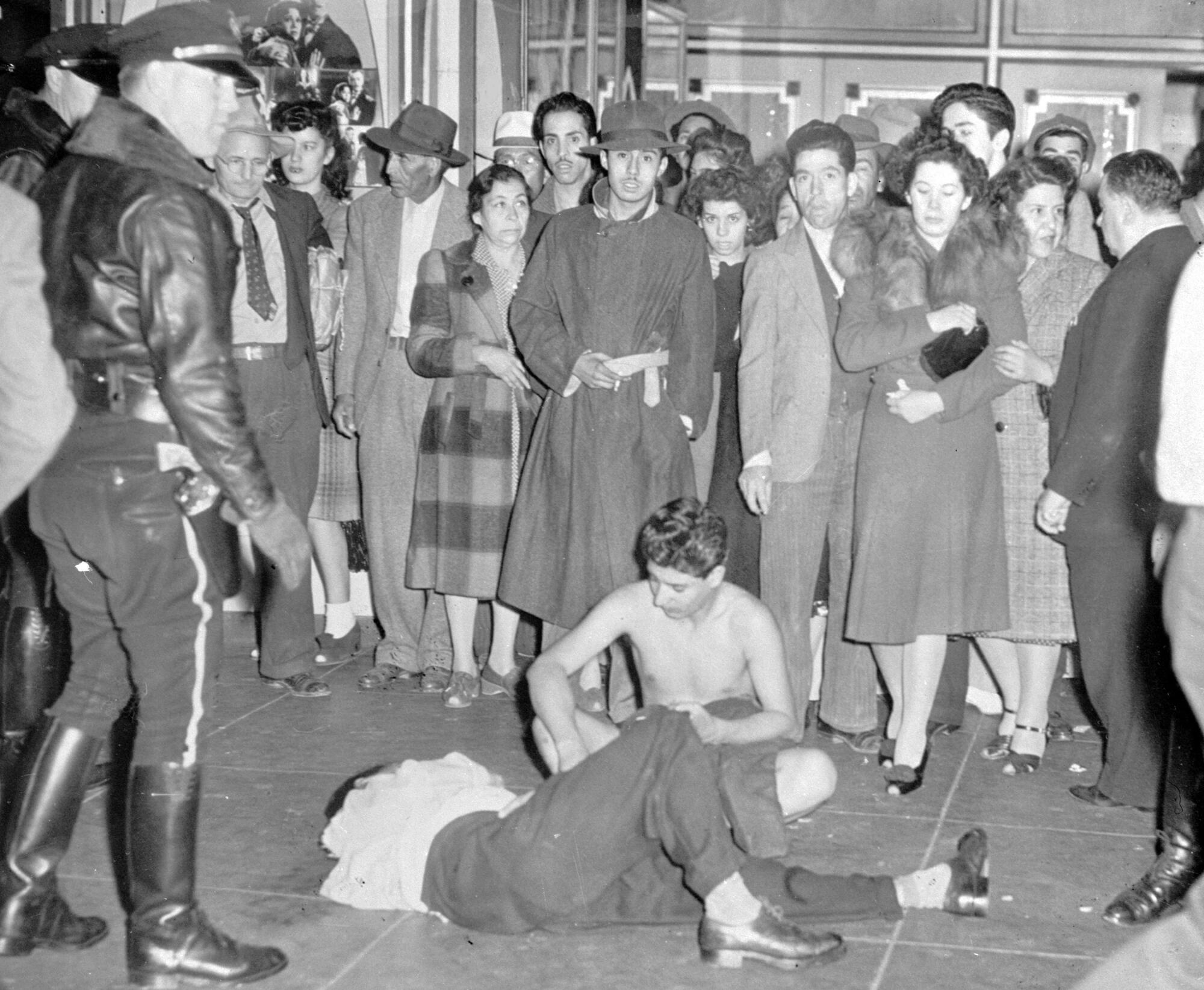
There were other episodes of violent upheaval over the summer of 1943 — including race riots in Detroit and New York. But only in L.A., writes historian Kathy Peiss in her informative 2011 book, “Zoot Suit: The Enigmatic Career of an Extreme Style,” “did a style of dress become the focal point of unrest or figure prominently in the response.”
It has been almost a century since the earliest (and much more modest) versions of the zoot suit began to emerge in urban centers across the United States. Yet the suit is with us still — employed as a formal garment for weddings and proms, as stage attire for pop acts and even as inspiration for high fashion. Have a look at Fresno-born, New York-based designer Willy Chavarria’s 2023 spring menswear collection and you will find echoes of the exaggerated contours of the zoot suit in his work: broad shoulders, tight waist and generous pants.
“For me, it’s a timeless silhouette,” says stylist and designer Keyla Marquez, founder of the L.A.-based Lujo Depot, which rents wardrobe for fashion and music video shoots. Marquez, who also serves as fashion director at large for The Times’ Image magazine, recently teamed with eight other designers to create updated versions of the suit. “It’s never gone out of style,” she says.
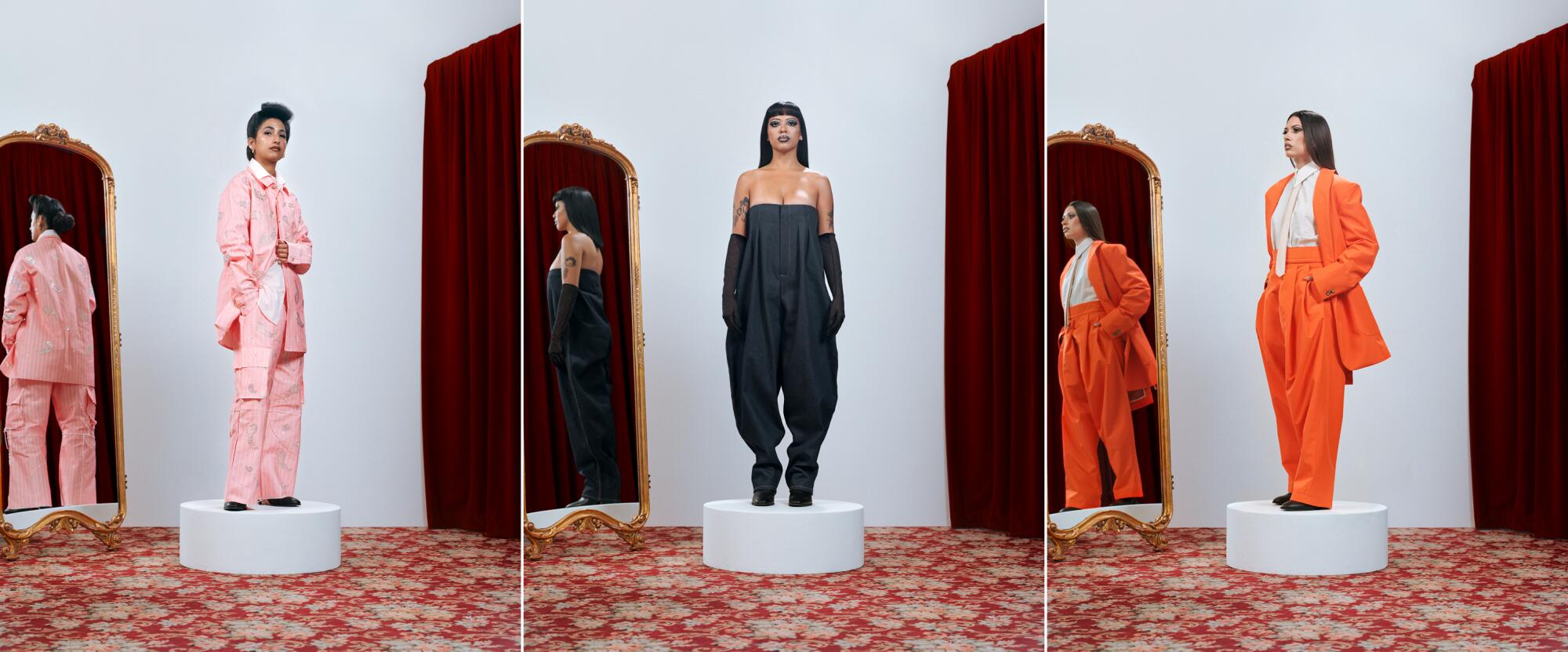
The suit, says Pilar Tompkins Rivas, was and remains a “cultural affirmation” among Mexican Americans. Now the chief curator at the Lucas Museum of Narrative Art, Tompkins Rivas organized “Tastemakers & Earthshakers: Notes From Los Angeles Youth Culture” at the Vincent Price Art Museum at East Los Angeles College in 2016, a show that examined the aesthetics of Chicano youth culture. “It’s a way of saying we can develop our own sense of style apart from hegemonic Anglo society.”
It’s a style she knows intimately — her maternal grandparents rocked the look. “Some of my most precious family photographs are of them when they were 18 with their drapes and their pompadours.”
For its wearers — most frequently, Black and brown men — the zoot suit also represented “a freedom over the body,” says Jillian Hernandez, author of “Aesthetics of Excess: The Art and Politics of Black and Latina Embodiment.” “If you think about braceros or the descendants of enslaved African Americans ... they were seen as workers. When you wear this garment, it’s saying, I’m valuable, I’m more than a worker, I value my body.”
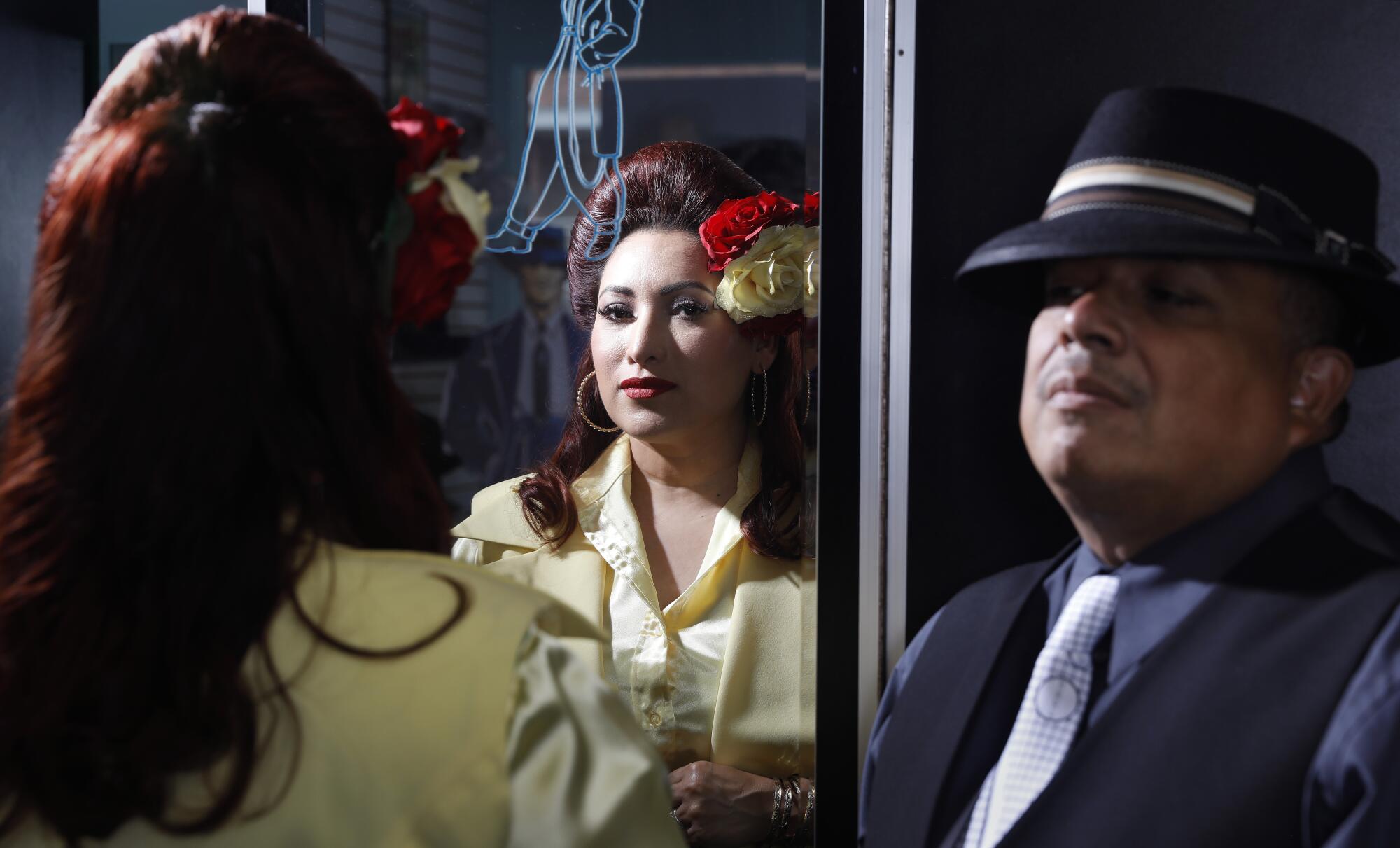
The origin story of the zoot suit is one of a few facts and a whole lot of lore.
What we do know is that its vital precursor emerged in the 1930s: a style known as the “English drape” — a men’s suit that was less restrictive and offered a bit more panache than other early 20th century styles. The cut featured boxy shoulders and roomier arm holes, as well as a loose, high-waisted pant that flared at the knee and was cuffed at the ankle. The design, Peiss writes, “emphasized male athleticism and virility.” The looser pant created a drape around the legs, which is how the suit (and later the zoot suit) got its moniker.
The English drape was a favorite of the Duke of Windsor, briefly Edward VIII, who abdicated the British throne to marry Wallis Simpson in 1936. The duke was a dandyish dresser who was much in the press in those days. “Many of the more daring of our Americans studied his garments before seeing their tailors,” wrote Julius J. Adams of the New York Amsterdam News, a Black weekly, just days before the Zoot Suit Riots began in Los Angeles. The story ran under the headline: “Who was First Zoot-Suiter? Was it the Duke of Windsor?”
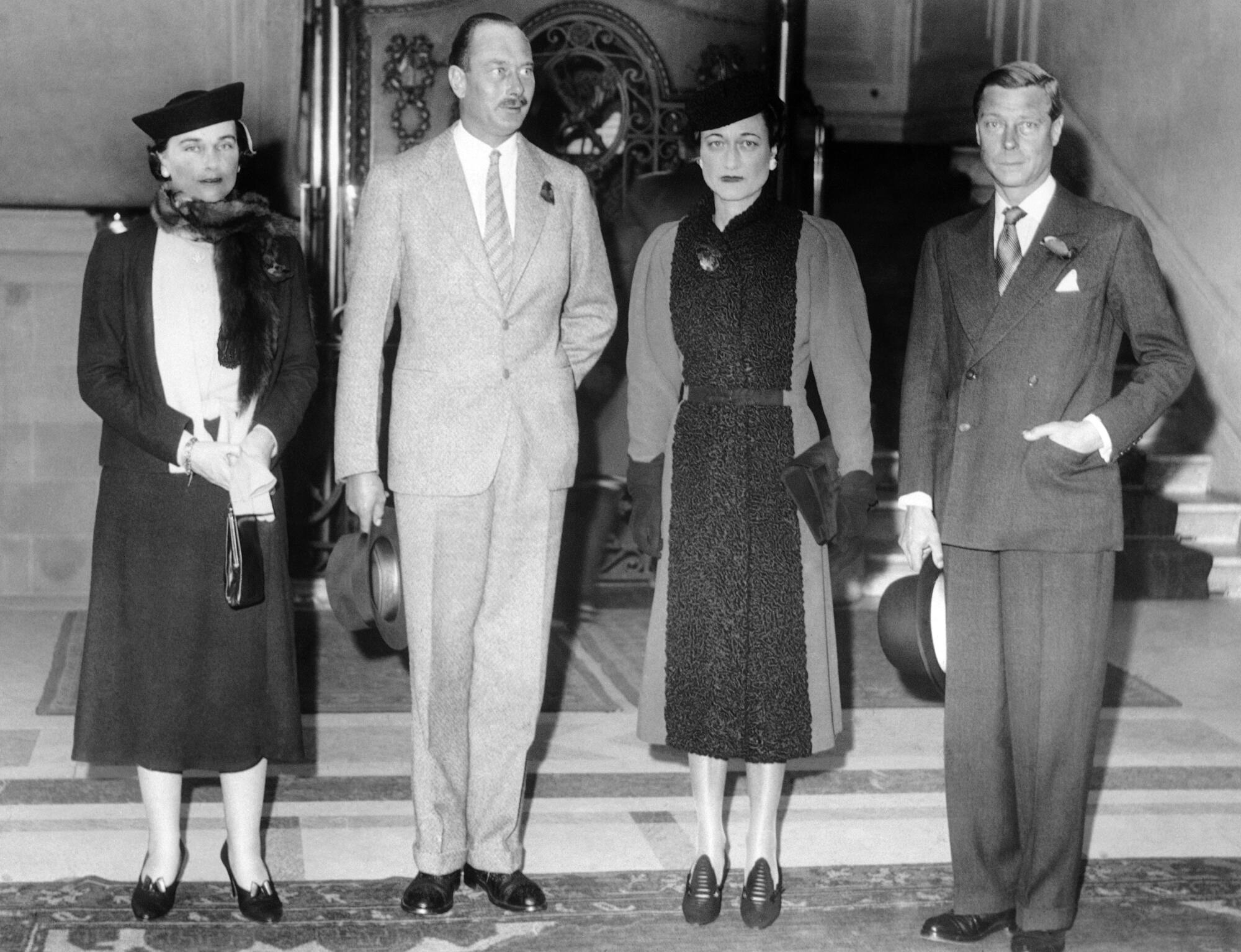
The drape suit was popularized by Hollywood actors, on screen and off. Cary Grant, Fred Astaire and Clark Gable wore it, and James Cagney turned it into de rigueur gangster wear.
The leap from drape to zoot wasn’t large. Exaggerate the proportions and zoot-iness will be achieved. How exactly that happened, however, is up for debate. As Peiss notes in her book, tailors around the country have, over the decades, laid claim to the design.
After the 1943 riots, the New York Times ran a story that purported to track the first ever zoot suit to a busboy in Gainesville, Ga. The report said that the style may have been inspired by the long frock coats worn by Gable in “Gone With the Wind,” which was released in 1939 — a theory echoed, at one point, by bandleader Cab Calloway, who was famous for his flamboyant drapes. But Howard Fox, a Chicago clothier and big band trumpeter who claimed credit for devising and naming the suit, once said that it was a style that “came right off the street and out of the ghetto.”
The zoot suit was likely more an evolution than a wholesale invention. Early versions featured a more modestly scaled jacket that landed just below the derrière — like one worn by a teenage Malcolm X. Later examples, known as “extreme drapes,” had long coats that hit the knee and trousers so baggy they could be confused for harem pants.
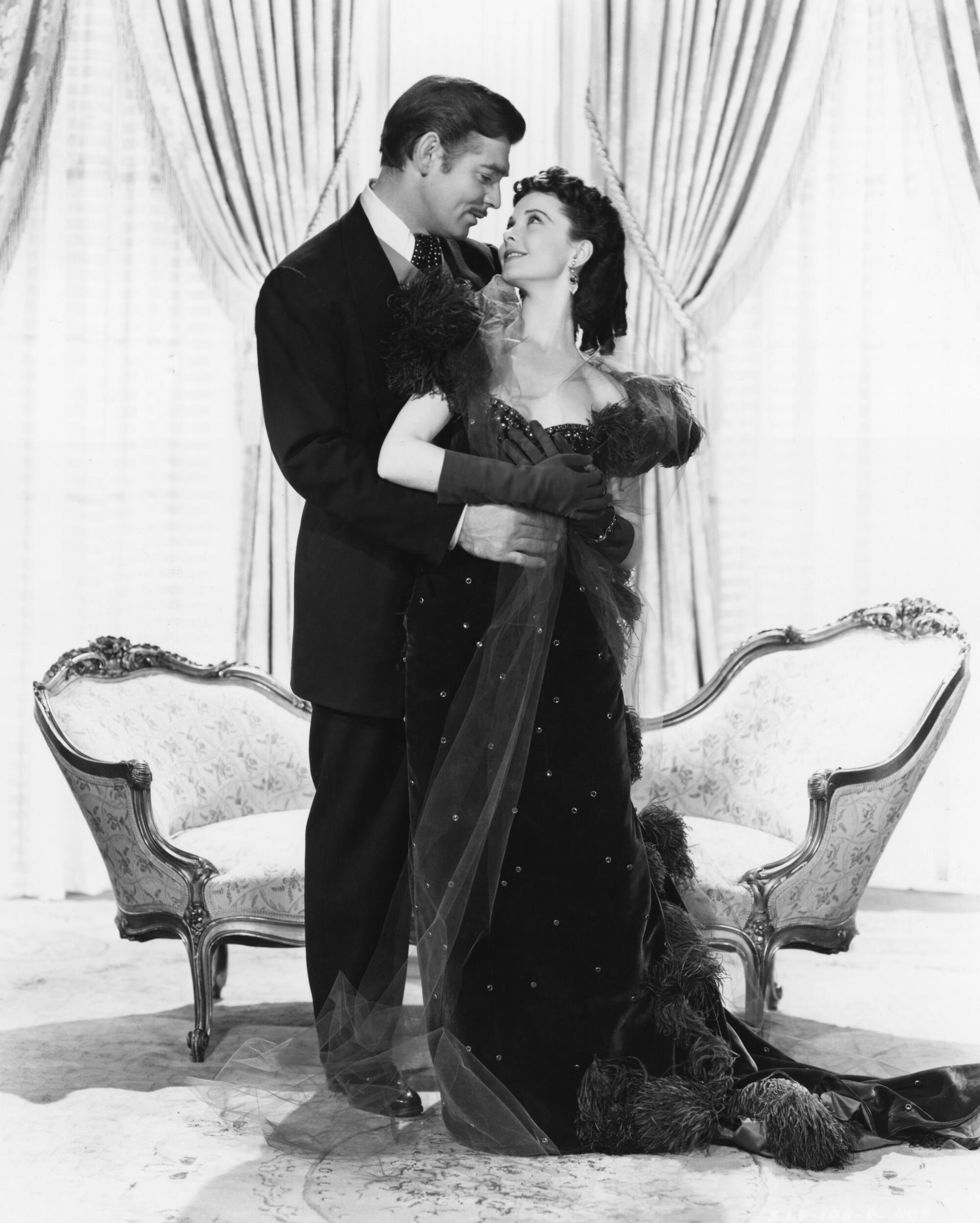
Whatever its exact journey, the suit spread like wildfire among hepcats who were into jitterbug and swing. (Zoot suits take on a conspicuous dynamism when the wearer dances.) Duke Ellington featured a skit about zoot suits in a musical review that played at the Mayan in downtown Los Angeles in the spring of 1941. Calloway appeared in a billowing white zoot suit in the hit 1943 movie musical “Stormy Weather.”
In the Southwest, the tacuche, as the suit was dubbed in Spanish, developed a devoted following among Mexican Americans, in particular among pachucos, urban youths who were interested in jazz and used a slang dialect known as caló. (Over the decades, media reports have conflated gangsterism and pachuquismo. To be clear: Not all pachucos were gang members, nor did all gang members dress like pachucos. And countless Mexican Americans who did not identify as pachucos adopted aspects of the style.)
But the tacuche did make a statement. The suit emerged as a phenomenon in the wake of the mass deportations of Mexicans during the Great Depression and at a time when the Mexican presence within the U.S. was growing increasingly urban. “The zoot suit was a very conspicuous look,” says Catherine S. Ramirez, author of “The Woman in the Zoot Suit: Gender, Nationalism, and the Cultural Politics of Memory.” “This was at a time when Mexicans and people of Mexican descent were not supposed to be seen. ... And for young people to stand on the street corner and announce their presence, this was a big deal.”
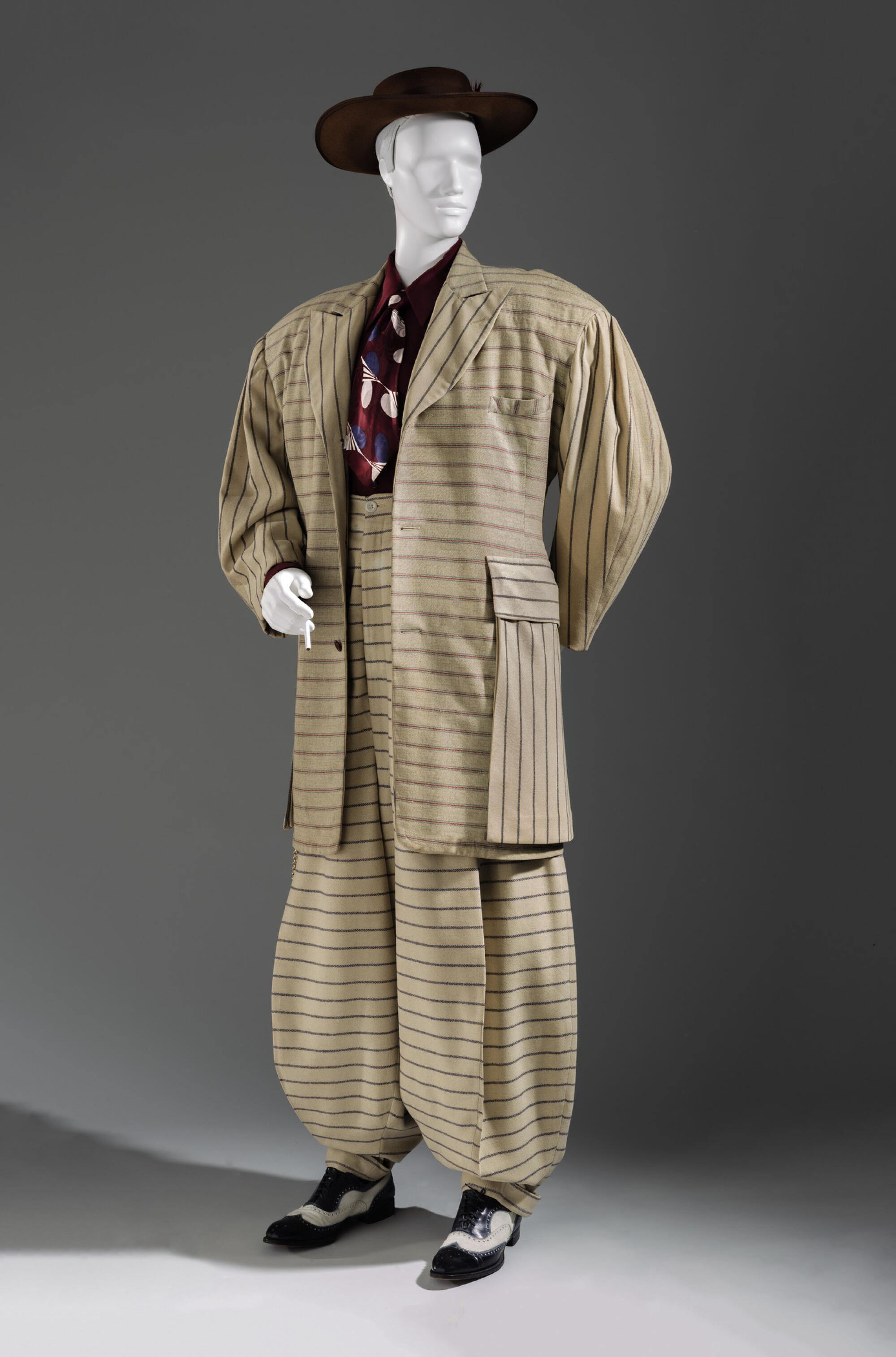
Over the course of her career, conceptual artist Sandra de la Loza has made work that examines underexplored L.A. histories, including a recent piece inspired by the Lincoln Heights Jail, where many zoot suiters were held during the riots (now on view at the Contemporary Arts Center, New Orleans). Both of the artist’s parents were pachucos in the 1940s, and she notes that the era was one of “intense Americanization,” when “you didn’t speak Spanish and you’d get punished if you looked a certain way.”
Pachuca fashion frequently consisted of an exaggerated version of ’40s era women’s styles that included pencil skirts and a broad-shouldered “fingertip” jacket (the sleeves went down to the fingers) whose cut evoked the dimensions of the zoot coat. Dark lipstick and bouffant hairdos completed the look. But some pachucas (including De la Loza’s mother, Hilda) also wore the men’s garb, such as the billowing pants — at a time when a woman in slacks was still considered outré.
As with any look, young people generally gravitated to it not because it made a grand political statement, but because they thought it was cool. Ramirez interviewed a number of women who donned pachuca styles in the ’40s for her book. When asked why, the answer was simple: “I didn’t want to be square.”
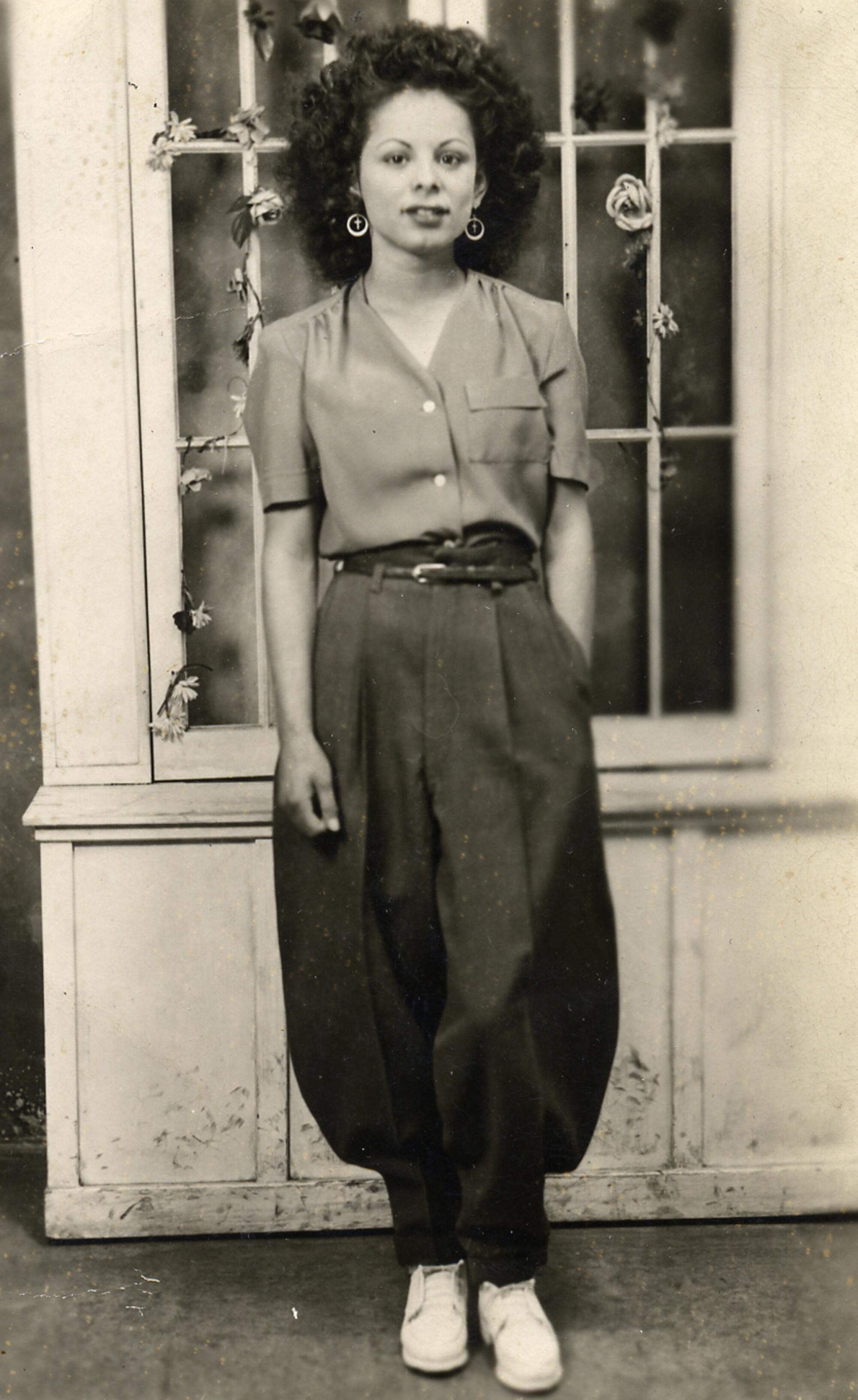
Naturally, its boldness and popularity made the zoot suit a target. Many parents hated the look. De la Loza remembers an anecdote about her grandmother burning one of her mother’s suits. As part of its coverage of the riots, The Times featured a photo of an “irate mother” tearing her son’s suit to shreds. Some dance halls established rules that coat sleeves should not extend beyond the fingertips and pants should not be too tightly pegged at the ankle. And, of course, there was the federal government.
In 1942, the War Production Board (WPB), the agency that regulated the production of goods during World War II, issued limits on the amount of wool that could be used in the fabrication of suits. Zoot suits were held up as symbols of profligacy. “Every boy or girl who buys such a garment and every person who sells it,” the head of the WPB stated, “is really doing an unpatriotic deed.”
The Zoot Suit Riots Cruise brings back ‘a forgotten era’
If at first the public attitude toward the suit had been one of bemusement, by the summer of 1943 it was being treated as a menace, Peiss writes, especially in L.A., where baseless rumors painted pachucos as gangsters and rapists.
When the riots exploded, city leaders got busy further vilifying the zoot suit. The Times labeled them “freak suits,” and the City Council passed a resolution banning the garment. In the meantime, the object of much of the violence was Mexican youth — whether wearing zoot suits or not. The suit was simply a convenient excuse.
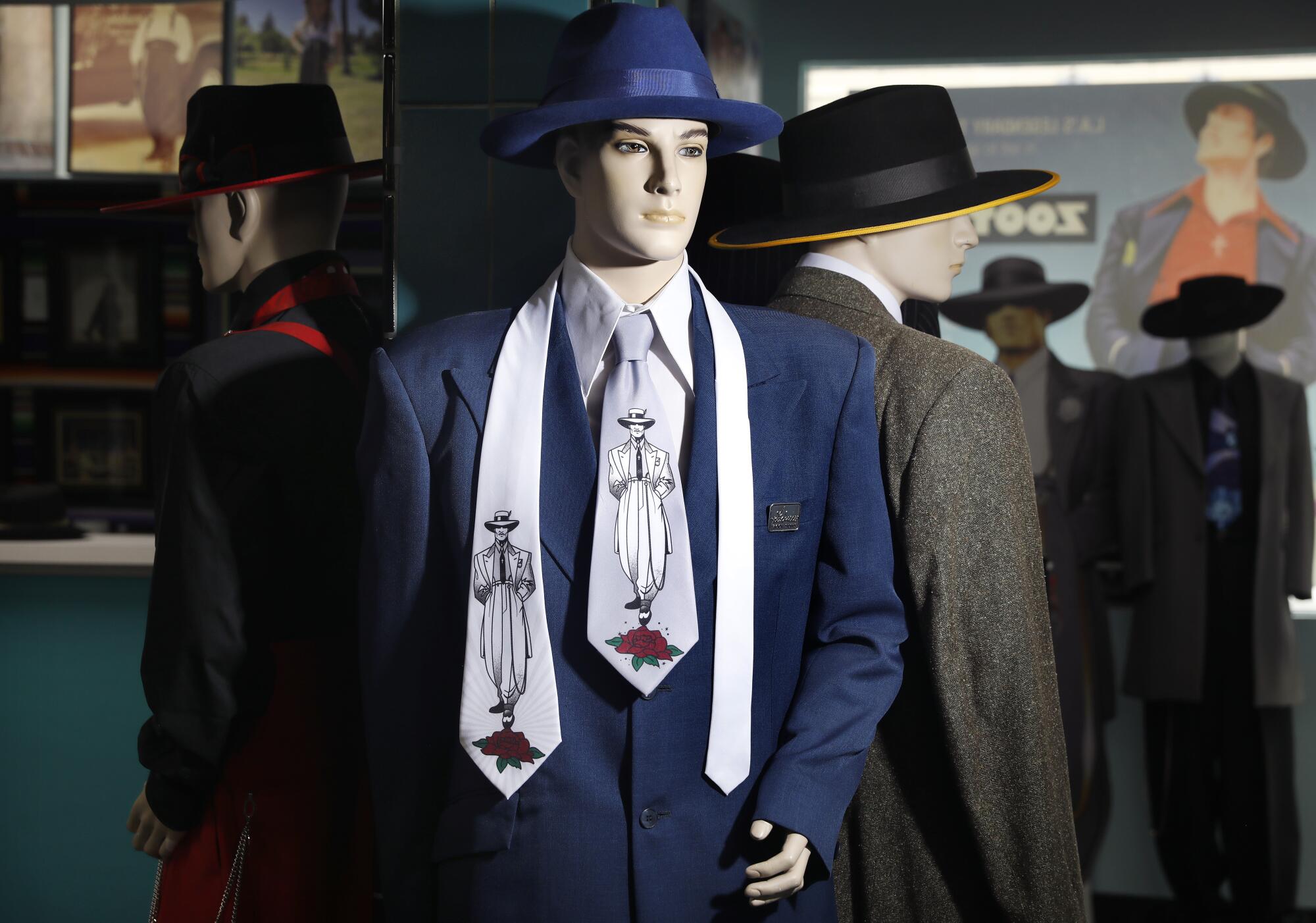
If the intent of the sailors who took to the streets of L.A. in June 1943 had been to rid the world of zoot suits, their actions were futile.
Coverage of the riots led to coverage of the style. There was sneering condescension, of course, but there were also some honest attempts to track the roots of the look. The New Yorker featured a chatty “Talk of the Town” dispatch about Harlem tailors known for crafting extreme drapes. (They found the tailors after calling on Black journalists at the Amsterdam News.) And the suit, already popular in the borderland areas around cities like El Paso, began to gain popularity internationally.
Mexican performers such as Tin Tan (Germán Valdés), who hailed from Ciudad Juárez, opposite El Paso, became known for playing a pachuco in films such as “El hijo desobediente” (The Disobedient Son), released in 1945. His character dresses in a flamboyant zoot suit — complete with feathered hat — and uses slang drawn from caló.
In Mexico City, dance halls began catering to a clientele that donned pachuco styles — one of which, the Salón Los Ángeles, operates to this day.
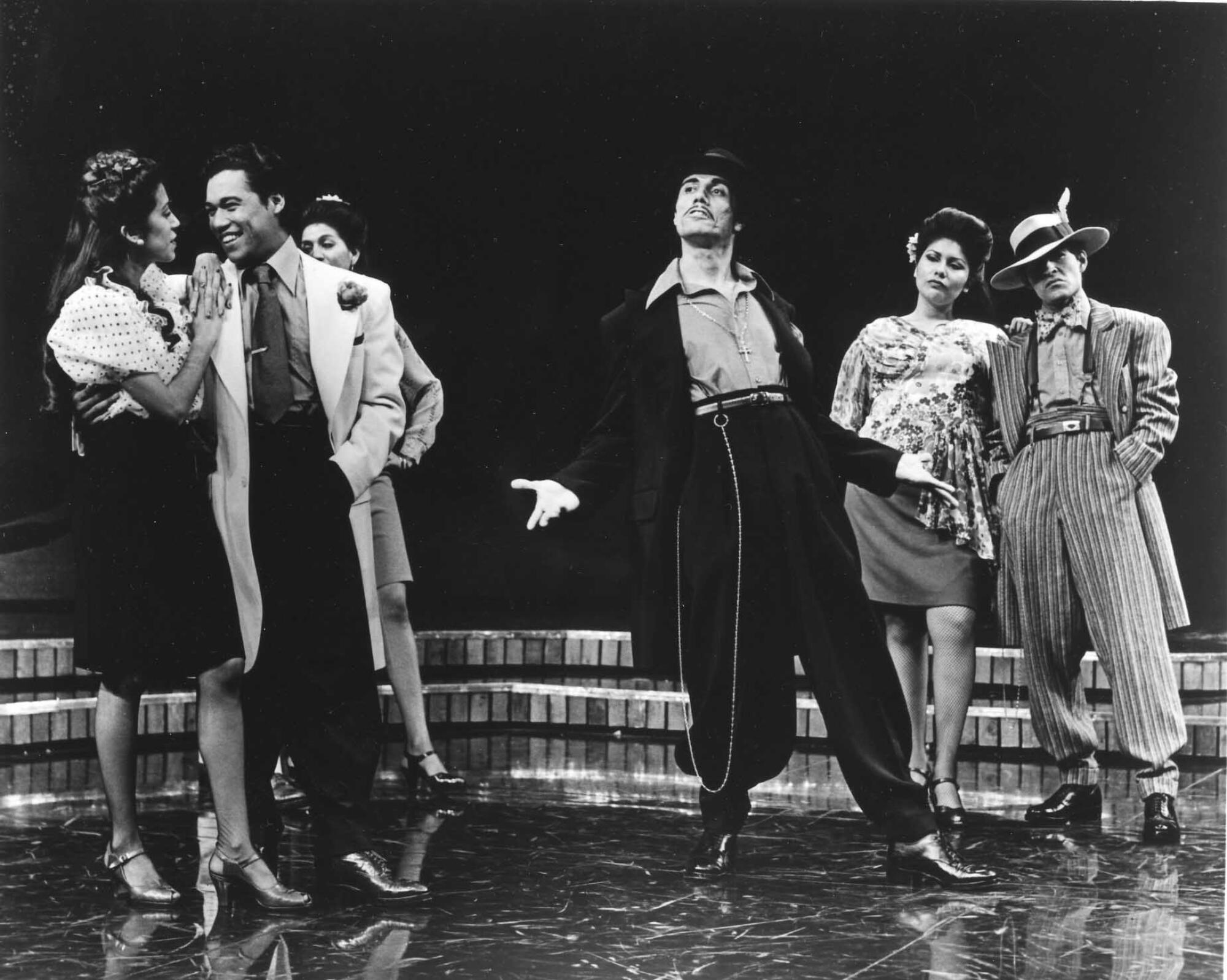
By the 1950s, the zoot suit began to fade, but echoes of the style remained.
Daniel James Cole, a historian who teaches at New York’s Fashion Institute of Technology and co-wrote the 2015 book “The History of Modern Fashion: From 1850,” notes that the 1950s, in some ways, saw a return to prewar trends, including trimmer suits without embellishments such as cuffs. But he says that a certain flamboyance redolent of the drape suit — and, by extension, the zoot suit — lingered.
The postwar “Bold Look” promoted by Esquire magazine in the spring of 1948 features a man with a boldly printed tie; pinstripes and double breasted cuts likewise remained. “You frequently saw men wearing boutonnieres with business suits and wide brim hats and their wide rayon ties,” says Cole, “and there’s this dapperness.”
More literal reverberations of the drape cut have also reappeared through the years in the form of fashions such as pegged pants. Artist John M. Valadez, who came of age in Boyle Heights in the 1950s and ’60s, says that even after the zoot suit had disappeared, “the pants were still a thing.”
In the late 1970s, he made a series of photographic portraits of Chicano youths during a residency at the Centro de Arte Publico in Highland Park, and the images frequently capture young men donning some version of pleated pants that drape around the knee. “It was about the ironing and the pleats,” he remembers, accompanied by bleached and starched T-shirts that were “ultra-white.”
De la Loza, who was part of the underground punk scene in the late 1980s, remembers wearing similar pants as part of her look. “I would wear men’s style shoes — wing tips — with baggy pants ... and then wear a tight top, like a halter top.” Like the evolution of the zoot suit, it marked a way of taking a trend and bending it to a specific social context. “We can take mass-produced clothing that is produced for certain intentions,” she says, “and then appropriate it and play with it as an act of gender defiance.”
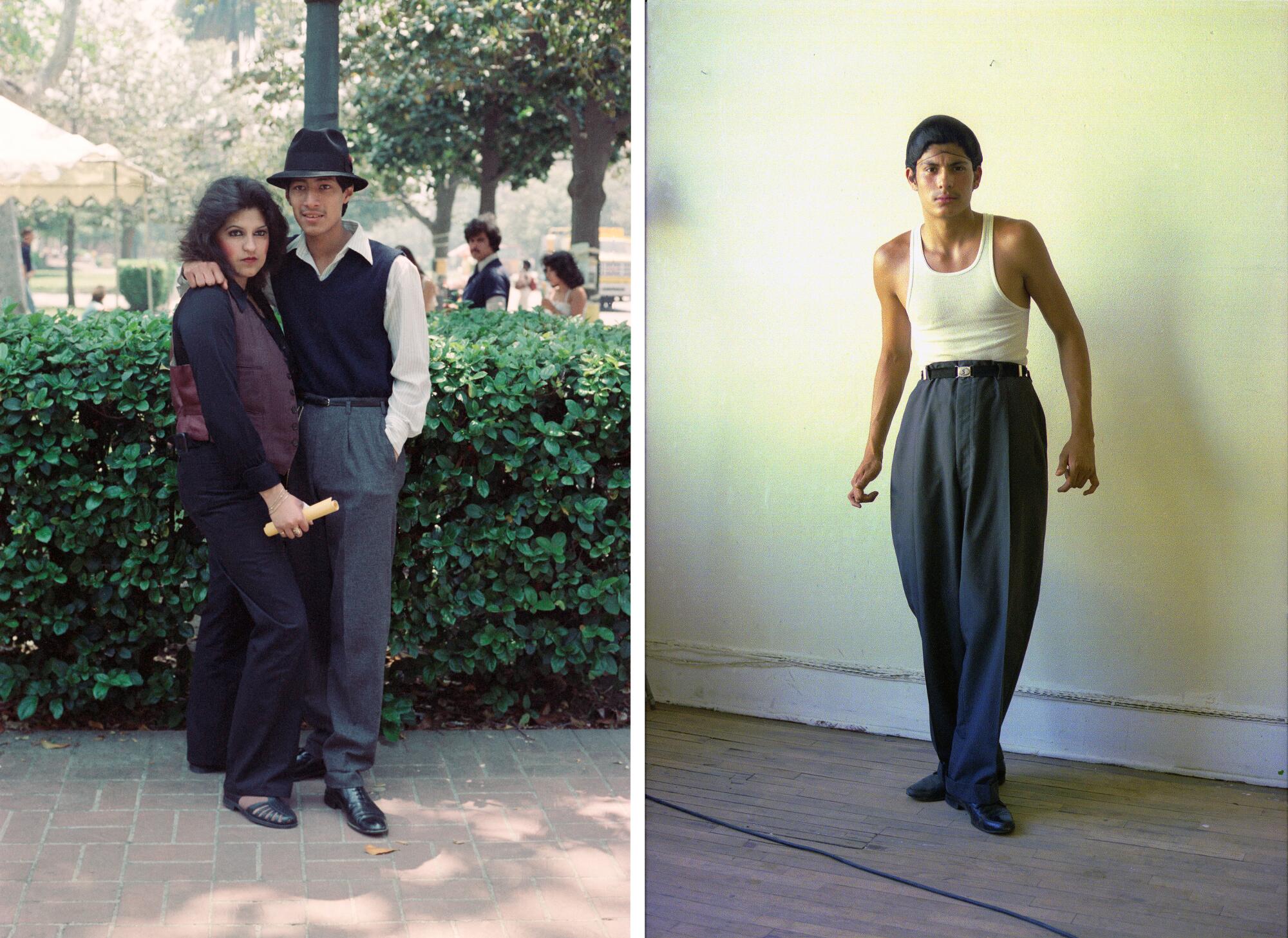
Over the decades, the zoot suit itself has made regular reappearances.
The premiere of “Zoot Suit” at the Mark Taper Forum in 1978, followed by the release of the film three years later, sparked a renewed interest in the suit — and reframed it within the greater popular culture as an object not of menace, but of cultural pride. (It didn’t hurt to have the relentlessly cool Olmos slinking around the stage striking choreographic poses in a stylish black tacuche and cherry red shirt.)
Musicians in search of flair have also found ways of keeping it alive. Mick Jones of the British rock act the Clash wore a purple zoot suit on stage during one of the band’s earliest U.S. television appearances in 1980. The swing revival of the ’90s — which saw the rise of bands such as Big Bad Voodoo Daddy and the Cherry Poppin’ Daddies — also kept the suit in view. Lead singer Roco Pachukote of the Mexico City rock band Maldita Vecindad has long worn zoot suits on stage, as has Kid Creole of Kid Creole and the Coconuts. In fact, one of Kid Creole’s suits — a bright coral one — is now in the collection of New York’s Metropolitan Museum of Art.
Early in May, I headed to El Pachuco in Fullerton, a boutique and custom tailor shop where the zoot set have been getting their duds since 1978. The shop was founded by Phyllis Estrella, who was inspired by the style after catching a production of “Zoot Suit” at the Music Center. Since then, her boutique has produced suits for musicians (including Pachukote and Kid Creole) and worked on fabrication of the costumes for the revival of “Zoot Suit” staged at the Taper in 2017.
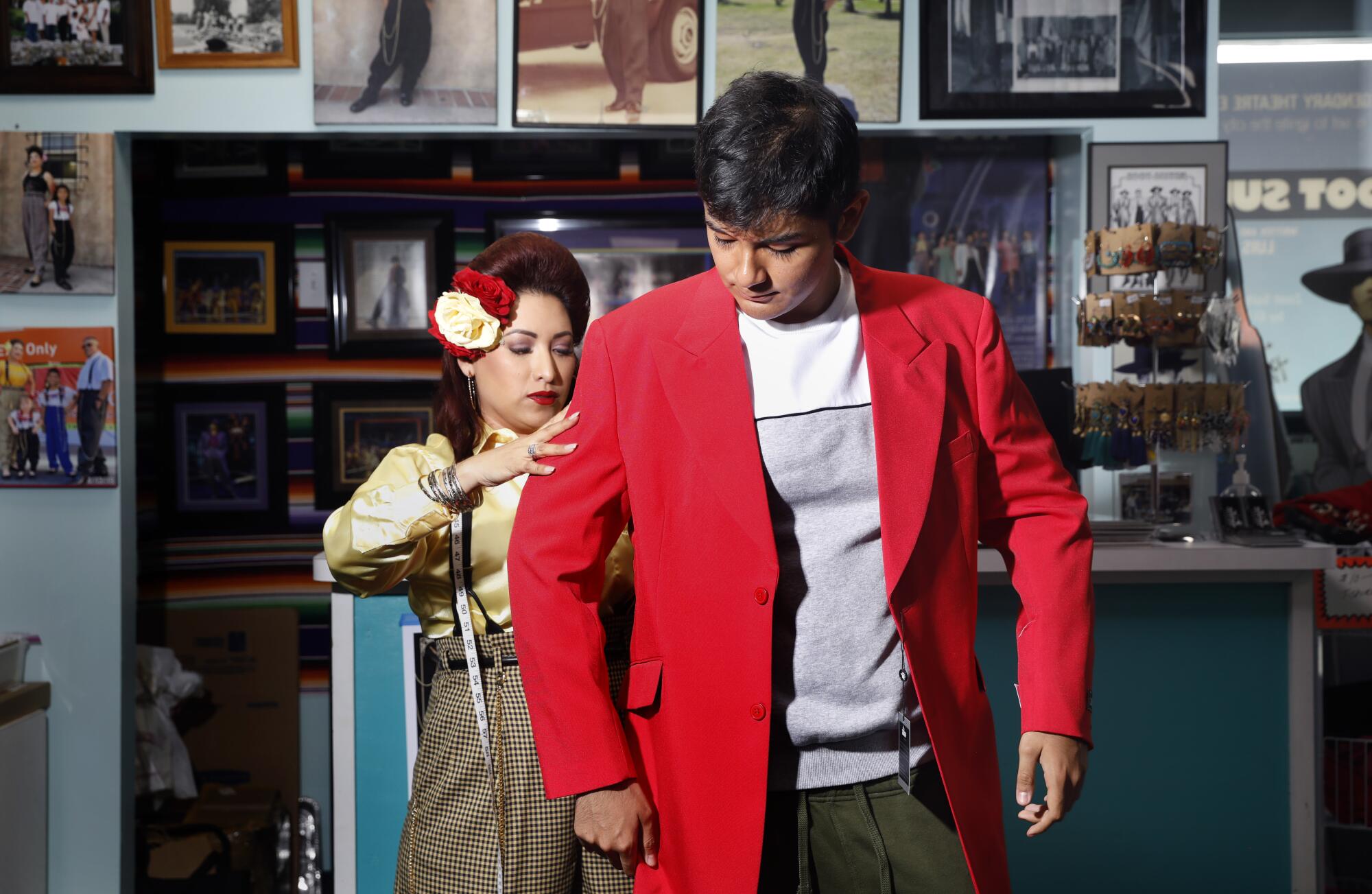
On the morning I land, the shop is being minded by Estrella’s daughter-in-law, Vanessa Estrella, who is busy fitting Adriana Olivas, a young woman from Colorado who is getting a custom suit made in emerald green fabric. The cuts of the shop’s suits honor the extreme drape look of the ’40s, Estrella says, but over the years colors and fabrics have evolved. In the past, suits were made with wool, which is heavy and expensive; these days, lighter poly blends are the fabric of choice.
What may have seemed a highly niche business has proved a long-lasting one thanks to the zoot suit’s staying power — aided and abetted by social media. (El Pachuco has even shipped outfits to Vietnam.)
Olivas, 26, says she is the fourth generation in her family to wear the suit. In the ’40s, her great-grandfather took to wearing a zoot suit as an act of solidarity after hearing about the Zoot Suit Riots — and he wore it the rest of his life. (“He was the No. 1 pachuco of Colorado,” she says.) Her grandparents and parents wore it, and now Olivas is passing on the tradition to her children.
“It’s important to teach my kids,” she says, “know where you came from and don’t let anyone tear you down for the way that you look.”
More to Read
The biggest entertainment stories
Get our big stories about Hollywood, film, television, music, arts, culture and more right in your inbox as soon as they publish.
You may occasionally receive promotional content from the Los Angeles Times.
